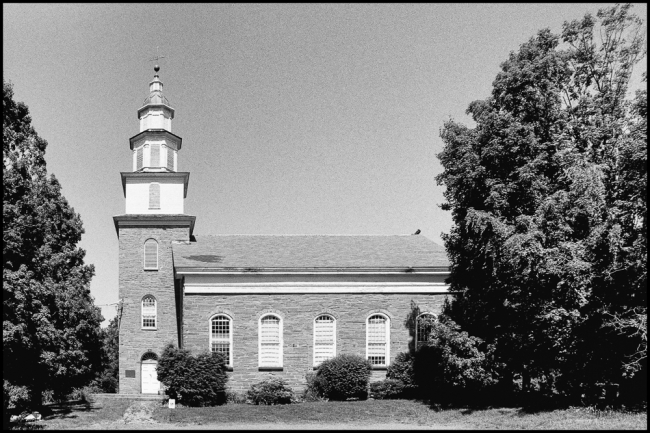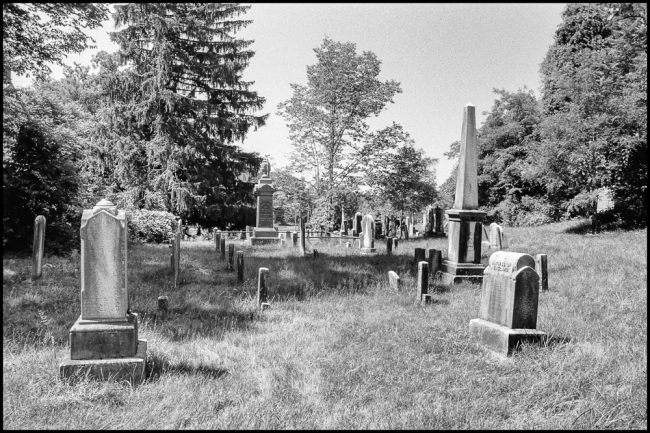As I was leaving Old Rhinebeck Aerodrome I noticed this lovely old stone church directly across the road.
A plaque on the side of the building reads:
The Evangelical Lutheran Church of St. Peter the Apostle known for more than a century as The Stone Church. Within its walls stood the first church built in 1730 by the Palatine Settlers to whose memory this tablet is erected by Chancellor Livingston Chapter, Daughters of the American Revolution and the State of New York, 1928.
According to Wikipedia:
Britain had offered its North American colonies as a refuge to Palatine Germans who fled to escape religious persecution following the War of Spanish Succession in the early 18th century. After years in work camps to pay back the cost of passage, in a failed attempt by the British to produce naval stores on the lands of the Livingston family in today’s Columbia County, some of the Germans settled in today’s Rhinebeck, swelling the population of an area lightly settled by the Dutch a few decades before.
In 1715, the Lutheran Germans built a church to share with members of the Dutch Reformed Church until they could establish their own. They were able to do this 14 years later, in 1729. The next year they built their first church on the site of the current building, midway between the two small settlements in the region along the Albany Post Road. At that time the main entrance was in the center of the eastern wall, and there was no tower.
By 1786 the congregation had grown to the point that a new building was necessary. It followed the meetinghouse plan, with the exception of the corner tower. The parsonage came later, in 1798, when The Rev. Friedrich Quitman, a man reported to be of high regard within American Lutheranism of the time, was hired as pastor. His son John, later to serve as a general in the Mexican-American War and as governor of Mississippi, was born in the house that year.
Later in Quitman’s pastorate, in the early 1820s, the congregation hired a local builder named Stephen McCarty to do $3,000 ($61,000 in contemporary dollars) worth of renovations to the church. Following the plans of Christopher Wren’s churches in London, its original plan was altered to make it more formal. The original side entrance was closed off, longitudinal aisles were introduced and the pews arranged to focus attention on the pulpit. The tower was added as well.
After Quitman’s death in 1832, the congregation built the school building. In 1843 all walls save the west one were resurfaced in stucco, and Venetian shutters (currently stored in the tower) were added to the windows. The growth of the villages and the subsequent establishment of Lutheran churches in them led to a decline in membership at St. Peter. In 1860 the church broke with the Lutheran Synod, making it hard to find a new pastor and costing it more members.
Renovations continued apace. In 1870 a new pulpit, platform and accompanying furniture were installed. The current pipe organ came along in 1882. Stained glass windows, since removed, were installed in 1890, the last major alteration to the original building.
Around that time, John Jacob Astor bought much of the land in the area for his estate, which had been home to most of the remaining congregants, and later demolished the residences. This exacerbated the decline in membership. The church was still able to continue as a weekly church until 1939, when its members finally went back to the quarterly meetings, the minimum activity necessary to qualify as a separate church.
The area’s Lutheran churches still hold occasional services there, and a small local church meets there. The parsonage and school have been used by the Museum of Rhinebeck History since 1993.
Taken with a Minolta STsi and Minolta AF Zoom 28-80 f3.5-5.6.


